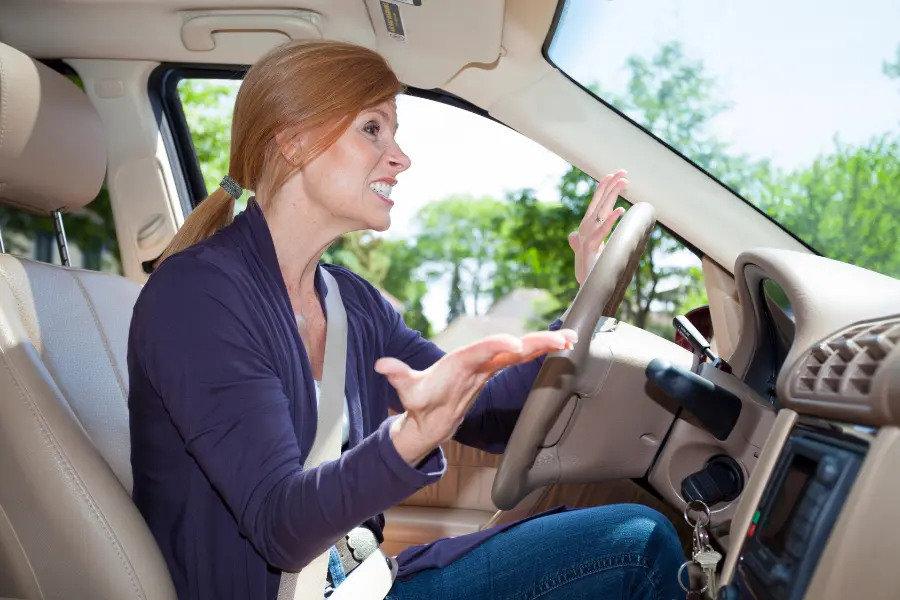What Aggressive Driving Is and the Risks Associated with It
Out of all the different ways to get around, driving remains the most popular option to get from point A to point B. For most people, that means taking their own vehicle; however, public buses and ridesharing services such as Uber and Lyft are also common methods.
However, even with all the safety features that modern cars have, driving remains one of the most dangerous forms of transportation. According to the National Highway Traffic Safety Administration, there were approximately 6,756,000 police-reported motor vehicle crashes in 2019. Out of all those crashes 1.9 million resulted in injury while over 33,000 resulted in a fatality.
So, what are the main causes behind these vehicle crashes?
It’s a bit of a mixed bag. First, vehicle crashes caused by driver impairment related to drugs and/or alcohol remain an issue. Other causes include driver distraction, inclement weather (ex: black ice, snow, heavy rain), and driver performance errors.
However, one of the biggest causes of vehicle crashes falls under the umbrella of aggressive driving. After defining what aggressive driving is and its impacts, we’ll discuss why it should be avoided and which new cars for sale in Houston are best for defensive driving.
What is Aggressive Driving?
Aggressive driving is a demeanor and set of behaviors that are intended to provoke other drivers, cause fear, and ultimately put themselves and everyone around them in an unsafe situation. Some of the most common behaviors of an aggressive driver include:
- Honks their horn excessively
- Provokes other drivers by flashing lights or turning on high beams
- Cuts off other drivers in traffic
- Follows too closely behind other drivers
- Intentionally runs red lights and stop signs
- Ignores signals from other drivers
- Fails to signal and yield right of way
- Passing other drivers in a way that’s unsafe
- Excessively speeding and/or weaving through traffic
- Taunting and/or verbally assaulting other drivers
- Getting out of a vehicle to physically confront another driver
Aggressive driving can be caused by numerous external and internal factors. For instance, traffic delays and gridlock can cause drivers to become more aggressive in an attempt to circumvent the issue that’s slowing them down.
Other causes include attitude, personal driving habits, and having no fear of consequences. According to the most recent statistics shared by The Zebra, approximately 82 percent of U.S. drivers admitted to engaging in aggressive driving at least once.
Naturally, this begs the question: how many accidents can be directly tied to aggressive drivers? According to data that was compiled by the American Automobile Association in 2019, they found that 55 percent of vehicle wrecks and accidents were caused by aggressive driving.
Why Should Aggressive Driving Should Be Avoided and How to Do It
Considering that more than half of vehicle accidents are caused by aggressive driving, that should be reason enough to make drivers reconsider their approach when behind the wheel. Aggressive driving should be avoided because:
- It endangers yourself and those around you
- It could result in injury and/or death of the parties involved
- It can lead to vehicle and property damage
- It can lead to being formally charged with a crime
- It can lead to a lawsuit
If you find that you’re engaging in aggressive driving or find yourself overwhelmed by anger, you should:
- Find a safe place to pull over and cool off
- Listen to music or a podcast that will improve your mood
- Focus on something more peaceful
- Make a hands-free call to a friend or family member who can calm you down
If you are being engaged by an aggressive driver, you should:
- Avoid eye contact and any form of engagement
- Avoid challenging them in any way
- Allow them to pass you, if possible
- Pull into a public place where they’d be unlikely to follow you
- Call 911 if they are threatening you with physical harm or make you feel unsafe
Finding a Vehicle Best Suited for Defensive Driving
Aggressive drivers have a penchant for testing the limits of safety while out on the road. This is especially dangerous in high-speed situations or during times of low visibility and/or inclement weather.
The best way to ensure the safety of yourself and your passengers is by driving defensively, not engaging with aggressive drivers, and having a vehicle that has the latest in safety and driver assistance features.
Some of the top safety features to look for when shopping for new cars include:
- Front assist with forward collision warning
- Blind spot monitor
- Rear traffic alert with visual and audible warnings
- Lane assist with visual and audible warnings
- Adaptive cruise control
- Light assist with high beam control
These types of advanced safety and driver assistance features help keep you informed and aware of other vehicles, which greatly comes in handy when dealing with aggressive drivers.



![10 Best Bags for Nurses | Personal Recommendation [2023] 4 Best Bags For Nurses Reviews in 2021](https://knowworldnow.com/wp-content/uploads/2022/12/Best-Bags-For-Nurses-Reviews-in-2021.webp)



![F95Zone Games - The Ultimate Guide for 2021 [F95Z Guide] 8 F95Zone Games](https://knowworldnow.com/wp-content/uploads/2021/07/ArTtW5LrK3b-z-0-y-637f48d86203817a9042a857.webp)